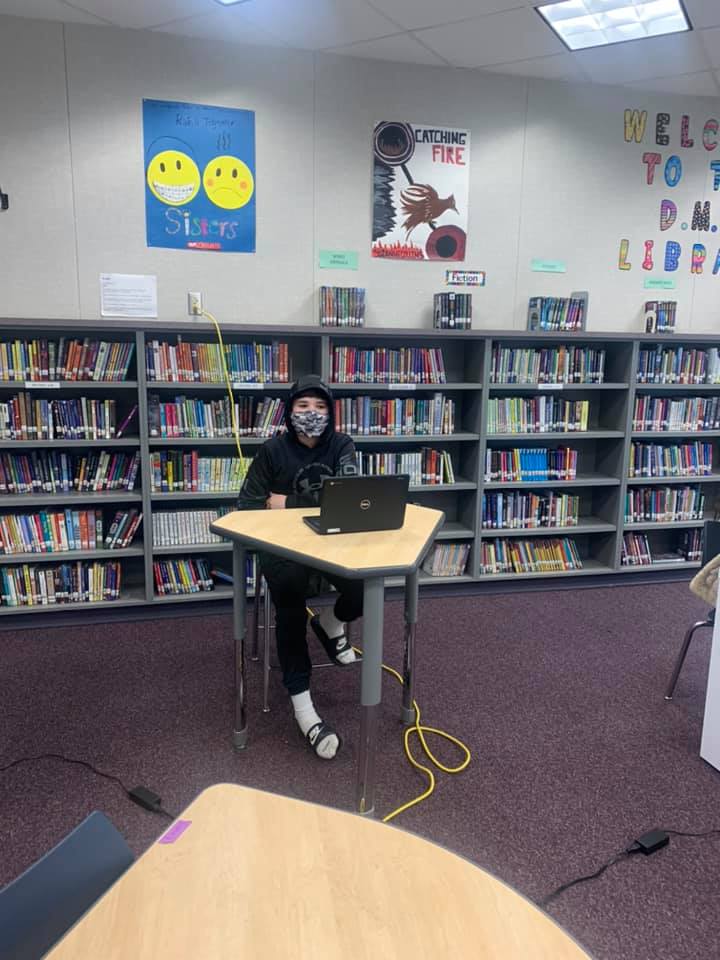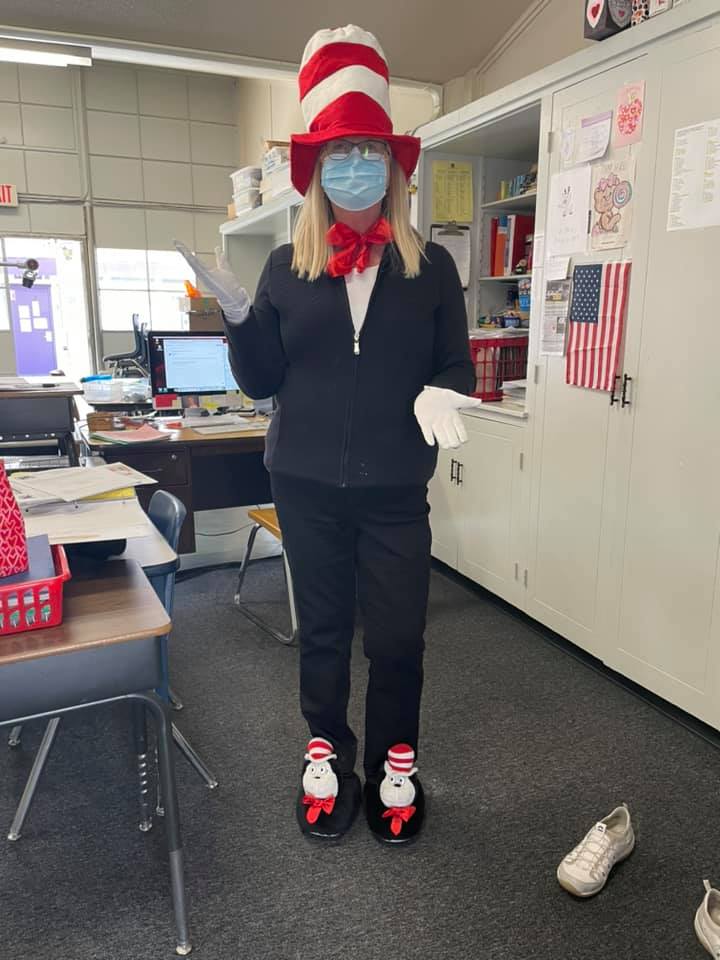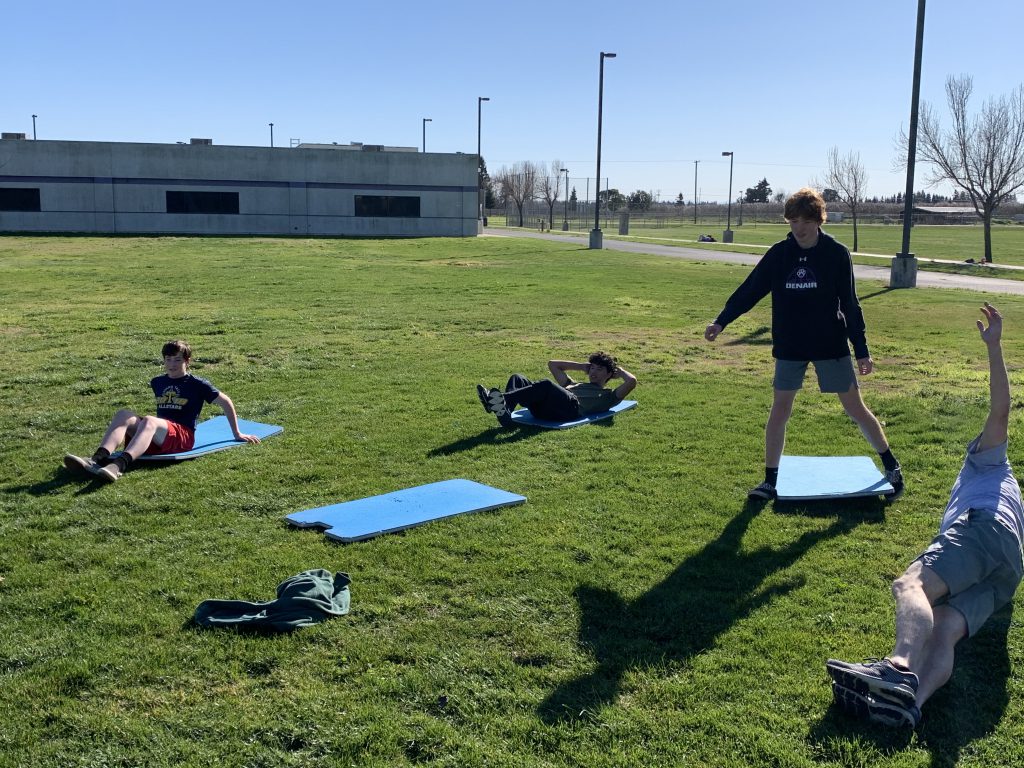There was a strong consensus at Thursday’s Denair Unified School District board
meeting about returning all students to the classroom as soon as is safely
possible. The operative question – the one with no clear answer — was, “When?”
In a discussion that last more than a third of their three-hour
meeting, trustees heard not only an update on the district’s COVID-related plans
from Denair Superintendent Terry Metzger, but also emotional pleas via Zoom
from two mothers who urged the district to bring students back to campus.
Like school districts all across the country, Denair pivoted to
distance learning a year ago when the pandemic was declared. In November, small
“learning cohorts” of students needing specific academic or emotional support
were allowed to return from one to five days at Denair’s campuses. And then on
March 1, more students were brought back part time with parental permission.
At Denair High School, for instance, about 70% of seniors were
organized into small groups that receive in-person as well as online
instruction on campus five days a week. At Denair Elementary Charter Academy, nearly
350 students have returned two days a week. At Denair Middle School, the number
is 89. All told, about half of the district’s
1,300 students are back on campus at least part of the week. The rest remain
100% on distance learning, based on their parents’ preference.
Now, the challenge for Denair is how to expand face-to-face
instruction while maintaining critical health safeguards for students and
staff.
Metzger told trustees that the district expects to add more
students on campus when classes resume April 12 after spring break. School days
also are likely to lengthen for what would be the final seven weeks of this
school year.
“The intent is to expand,” Metzger pledged, even as she
acknowledged that half-days in class don’t always mesh with the schedules of working
parents and that important services like busing and after-school care still
will not be available.
Trustees encouraged district officials to do all they can to open
campuses to as many students as possible. That came after two mothers shared
the experiences of their children.
“Our kids are struggling. They’re
hurting. They’re drowning,” said Leslie Van Gaalen, who transferred her
elementary-age daughter to another district because her grades had suffered
while on distance learning. “It’s time to get our kids back in school five days
a week. Enough is enough.”
Andrea Bennett, whose son is a first-grader in DECA’s Dual
Immersion Language program, said the past year has “taken a toll” on students
and parents. She questioned why the district is poised to spend money on COVID
tests so high school football games can be played “but is not spending money to
put our kids in schools.”
“For those of us who want our
kids back in school, we have no reasonable or sustainable options,” Bennett
said. “All I hear are excuses about why we can’t. I need to hear why we can.”
Van Gaalen and Bennett were the
first parents to address trustees at their monthly meeting since the district
shut down campuses in March 2020.
“I empathize,” said Trustee Ray
Prock Jr., who thanked the two women for speaking. “We’re doing everything we
can to figure this out logistically to get more students in seats.”
Metzger said there are many barriers the district must overcome to
expand face-to-face instruction for all students whose parents want it. Based
on multiple surveys, that’s about 55% of the total student population.
Space is an issue, especially at DECA. Some of its smaller, older
classrooms only have room for eight students because desks must be spaced at
least 6 feet apart. Even on the other campuses, the largest classrooms can only
accommodate about half the students in a normal class.
“There are some classrooms that will not hold more than
11 children,” Metzger said. “If we have 20 children and we can only hold 11,
where do you put the other nine?”
Adding plexiglass shields between desks – similar to what
has been done in school offices — is one possibility that could allow more
students to be grouped together, Metzger said.
Staffing is another concern. Most teachers now must lead in-person
as well as online classes – which divides their days and requires more
preparation. If more students return to the classroom full time, some teachers
will have to be reassigned to teach only online classes.
“If the board wants us to go full
time, five days a week, it will require us to hire teachers for distance
learning,” Metzger said.
Denair expects to receive an estimated $3.5 million in COVID
relief funds — about $2.1 million from the feds and $1.4 million from the
state — to help pay for various pandemic-related expenses. Only about $1.1
million has arrived so far, Chief Business Official Linda Covello told trustees.
She expects the rest of the money to reach the district by September.
The district has spent about $640,000 so far, including $308,944
for 585 Chromebook computers so each student could have one and for 233 mobile
hotspots to enable children to connect with teachers from home. More money was
devoted to buying masks, face shields, plexiglass screens, hand sanitizer, cleaning
supplies and other items.
On Thursday, trustees earmarked $392,000 for a project with
Climatec to update ventilation systems and equipment on all four Denair
campuses to improve air flow in classrooms and other buildings. More money will
be set aside to pay for biweekly or more frequent testing of all students and
staff, which Covello estimated will cost between $80,000 and $150,000 for the
rest of this school year. The rapid tests range from $5 to $10 each; if one
turns up positive, then a more expensive PCR test is required.
Already, a Denair High student tested positive, resulting in that
student and eight others, including their teacher, being quarantined for 10
days, Metzger said.
Though vaccinations are not mandatory, she said about 70 of
Denair’s 200 employees have received at least one COVID shot.
With Stanislaus County still in the state’s purple tier –
reflecting widespread COVID transmission – Denair remains committed to
returning students to in-person instruction in a way that protects the children
and the staff.
“We want to get as many kids on
campuses with the resources we have,” said Trustee Crystal Sousa. “We know how
devastating the past year has been on the kids and the teachers.”






